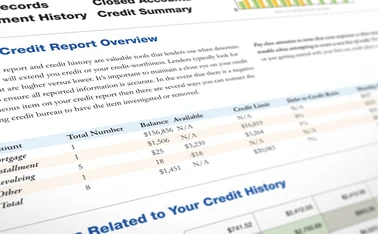Tackling solvency and liquidity issues in Schrödinger's Economy

Central banks’ actions during COVID-19 have been broadly positive, but underlying solvency and credit crises are major threats that will reveal themselves as the economy revives. To address the issues, financial firms can employ a host of modeling and analytical techniques.
Dead or alive?
‘Schrodinger’s Cat’ is a thought experiment – a cat is locked in a box with poison which is released randomly. After a given point the cat is considered to be simultaneously ‘alive’ and ‘dead’, and it is impossible to resolve which state it is in until the box is opened. This metaphor can approximately be applied to major chunks of the global economy since the COVID-19 lockdown and the financial emergency it instigated.
Keeping it liquid
Financial disasters in recent memory – notably the global financial crisis (GFC) that took hold in 2008 – have centered on liquidity rather than solvency. The issue has not been that institutions in financial markets tend to run out of capital, but that trust (and therefore liquidity) in the system breaks down, because no one is willing to lend to anyone else.
This has systemic effects in the ‘real’ economy as shocks are transmitted from institution to institution and country to country. Businesses lose access to funding, or cannot pay their liabilities, so they lay off workers and potentially go bankrupt.
Much of the initial financial response to COVID-19 has therefore been to avoid a liquidity crisis, to ensure that institutions keep trading with one another and that trust does not break down. This has been primarily mediated by central banks such as the Federal Reserve in the US. (Another notable recent example of the Fed taking action to stabilize a market is illustrated in Figure 1).
Figure 1: The Fed steps in to stabilize the repo market*

Source: Chartis Research
The solvency issue
If we were to score the actions of central banks in the COVID-19 crisis, such as those taken by the Fed, the marks would generally be good. Institutions – most significantly central banks – have internalized the lessons learned from the GFC, and during the pandemic they acted far quicker and at a far greater scale than we saw last time around. Asset purchases and interventions have dwarfed the Fed’s previous colossal efforts, and outstripped even Mario Draghi’s entreaty to do ‘whatever it takes’.
However, this is only one component of the crisis that should be considered. Because of their advantages in terms of speed and responsiveness, central banks are structurally well-equipped to deal with liquidity crises, but they are not necessarily good at dealing with solvency crises.
If institutions don’t have money in the US, the Fed can lend to them at low interest rates (there are many businesses for which the Fed would be stretching its mandate in doing so, although it has previously extended assistance to ‘financialized’ corporates in, for example, the US auto industry). But that doesn’t change the fact that the entity in question has been loaned money that it can’t necessarily pay back. This is where the problem of central banks as ‘lending’ rather than ‘money-creating’ institutions arises. It is where the second piece of the crisis potentially kicks off.
Significant portions of the real economy have been hammered by COVID-19, and probably rendered insolvent. It is extraordinarily challenging to effectively determine which parts are actually ‘dead’ and which parts have just been temporarily switched off until money-flows start running through them again. What we are seeing therefore is effectively ‘Schrödinger‘s Economy’, living in a box with the poison of lockdown, simultaneously alive and dead.
Credit flashpoints
The solvency crisis is also a credit crisis. In the main, it is possible to push parts of the financialized economy around by injecting low-interest loans, but large holes in income will inevitably be opened up, and people will end up owing money to each other that can’t be repaid.
The effect of ‘loan holidays’ (whereby loan payments have been deferred in several countries) will have to be resolved one way or another. Choices have to be taken about whether debts are deferred or forgiven, increasing the risk of bankruptcies (for deferred payments which then suddenly crush a firm’s balance sheet before business has picked up again); or ‘zombie companies’ (which might have gone under before the financial crisis but use loan forgiveness to survive).
While the effects are difficult to forecast, there are a number of potential flashpoints to keep an eye on. They include:
- Loan securitizations. More than $600bn is tied up in collateralized loan obligations (CLOs) (more than for collateralized debt obligations [CDOs] in the GFC, for example), and these are used primarily to match risk appetite for lender and debtor for companies with somewhat lower credit. This can include COVID-vulnerable businesses such as airlines, restaurants and so on. The possible mechanism is relatively straightforward: potential defaults push the investment grades down and cause the owners of CLOs to be unable to pay, driving a mass sell-off as the price plummets. There are some debates as to whether these are as systemically dangerous as CDOs – they lack the credit default swaps which turbocharged the GFC, and they are (debatably) less vulnerable to a single trigger, as mortgage-backed securities were.
- Complex products built on a ‘normal’ baseline of credit activity can also be an issue, as demonstrated by the struggles involved in relying on structured products in France.
- Derivatives in particular pose significant risks from margin calls and collateral demands due to underlying losses in economic positioning. Default provisions will have to be re-examined.
Fixing the holes and modeling the future
When it comes to those mechanisms that can be used to ameliorate or manage these issues, the book is currently open. Forbearance on loans at a systemic or individual level, as well as covenant relaxations, are ways to get around loan repayments in the short term.
In the end, though, these holes – literally places where money was supposed to be paid, but hasn’t been – can be shuffled around, but they won’t stop existing. Direct action, beyond the remits of even the mighty Fed, will have to be taken by governments, or there will be significant real effects in the economy, both in the US and internationally.
Different entities (such as banks and fund managers) will have different responses available to them, including covenant modifications. But all market entrants and financial institutions (FIs) should be able to effectively model a broad range of outcomes in their loan books. In addition, complex macroeconomic modeling will be better able to capture the effects of industry-wide change on loan books, and accurate corporate credit data will become increasingly valuable as FIs attempt to model the industries – or even individual companies – that are more at risk of large-scale defaults**.
Advanced credit and margin modeling tools (such as credit valuation adjustment [CVA]) will be important, yet the approach from institutions should be harmonized: International Financial Reporting Standard (IFRS) and Basel modeling approaches have different end goals, as they are focused on P&L and regulatory capital respectively. Adjoint algorithmic differentiation (AAD) techniques can be used to effectively ‘bridge the gap’. Credit portfolio optimization will become a focus for FIs, including economic scenario generation (ESG), simulation frameworks, reverse stress testing, contingent claims definitions and behavioral analytics.
At the time of writing, a broad-scale financial crisis seems unlikely, and FIs are looking wobbly but relatively stable, or at least unlikely to collapse any time soon. However, underlying gaps in the economy could create some choppy waters that are unlikely to be calmed in the immediate future, and only the best-prepared market participants will be able to navigate them.
Further reading:
(2020, Chartis)
*Bank of England, Interim Financial Stability Report, May 2020.
**For more on these dynamics, see Chartis’ ‘Technology Solutions for Credit Risk 2.0, 2018’ report.
Points of View are short articles in which members of the Chartis team express their opinions on relevant topics in the risk technology marketplace. Chartis is a trading name of Infopro Digital Services Limited, whose branded publications consist of the opinions of its research analysts and should not be construed as advice.
If you have any comments or queries on Chartis Points of View, you can email the individual author, or email Chartis at info@chartis-research.com.
Only users who have a paid subscription or are part of a corporate subscription are able to print or copy content.
To access these options, along with all other subscription benefits, please contact info@risk.net or view our subscription options here: http://subscriptions.risk.net/subscribe
You are currently unable to print this content. Please contact info@chartis-research.com to find out more.
You are currently unable to copy this content. Please contact info@chartis-research.com to find out more.
Copyright Infopro Digital Limited. All rights reserved.
As outlined in our terms and conditions, https://www.infopro-digital.com/terms-and-conditions/subscriptions/ (point 2.4), printing is limited to a single copy.
If you would like to purchase additional rights please email info@chartis-research.com
Copyright Infopro Digital Limited. All rights reserved.
You may share this content using our article tools. As outlined in our terms and conditions, https://www.infopro-digital.com/terms-and-conditions/subscriptions/ (clause 2.4), an Authorised User may only make one copy of the materials for their own personal use. You must also comply with the restrictions in clause 2.5.
If you would like to purchase additional rights please email info@chartis-research.com



